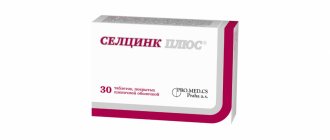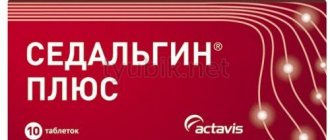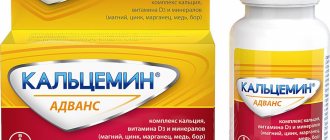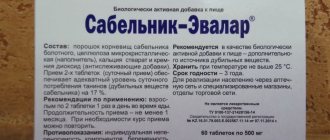Instructions for use DICLORAN® PLUS
The pharmacological effect of the drug is determined by the composition of its constituent components. It has a local analgesic, anti-inflammatory and anti-edematous effect.
Diclofenac diethylamine
is a non-steroidal anti-inflammatory drug with anti-inflammatory, analgesic and antipyretic effects, one of the known components of which, according to clinical trials, is the inhibition of prostaglandin synthesis.
Methyl salicylate
is a common component of ointments and creams intended to relieve musculoskeletal pain. Salicylates are used for myalgia, arthralgia and headache, providing both peripheral and central effects.
When applied topically, diclofenac and methyl salicylate are quickly absorbed and, penetrating into the subcutaneous tissue, muscle tissue and joint capsule, reduce pain and inflammation in the joints, their morning stiffness and swelling, and help increase range of motion.
The main component of linseed oil
is α-linolenic acid, which has a local anti-inflammatory effect. When used, α-linoleic acid is absorbed into the blood, penetrating into the circulation. During metabolism, it is converted to eicosapentanoic acid, which, under the influence of cycloxygenase and lipoxygenase, gives rise to the corresponding non-inflammatory prostaglandins and leukotriene. Against this background, according to the principle of negative feedback, the synthesis of inflammatory prostaglandins E2 and F2 is suppressed, which underlies the anti-inflammatory effect of α-linoleic acid.
Menthol
- causes irritation of nerve endings, has a local distracting and mild analgesic effect, and causes a local cooling sensation. When used together with diclofenc, menthol activates the processes of skin penetration of the latter, which is confirmed by numerous preclinical and clinical trials.
Musculoskeletal disorders, minor injuries, and soft tissue inflammation are typically characterized by localized pain, various functional impairments, and swelling.
The inflammatory process involves a series of events that can be induced by a variety of stimuli (eg, infectious microorganisms, ischemia, antigen-antibody interactions, thermal and other physical influences). Each type of stimulus produces a specific response. At the macroscopic level, the response is usually accompanied by redness, swelling, muscle tension and severe pain. There are three phases in inflammation, each of which is caused by its own mechanisms:
- the acute temporary phase is characterized by local vasodilation and increased capillary permeability;
- the delayed subacute phase is usually characterized by tissue infiltration by lymphocytes and phagocytes;
- the chronic proliferative phase, during which tissue destruction and fibrosis develop.
The inflammatory response is caused by the release of eicosanoids in response to mechanical, thermal, electrical, bacterial or chemical stress. Depending on the type of fatty acid involved, different types of eicosanoids can be formed. Arachidonic acid is an intermediate product of fatty acid metabolism. During the metabolism of linoleic acid, 2 types of prostaglandins (E2 and F2) and 4 types of leukotrienes (B4, C4, D4, E4) are formed. It is well known that eicosanoids modulate the inflammatory and immune response and contribute significantly to the development of inflammation.
Prostaglandins sensitize sensory nerve endings to chemical and mechanical stimuli. Thus, their release during inflammation serves as a unique mechanism for increasing pain.
Prostaglandin E2 significantly enhances swelling and lymphocytic infiltration by activating blood flow in areas of inflammation. It also potentiates the activity of bradykinin and autocoids, which also leads to increased pain.
Leukotriene B4 is a powerful chemoattractant of polymorphic leukocytes and activates the processes of plasma exudation, which is a source of additional inflammatory mediators.
The source of formation of prostaglandins in the body are natural fatty acids, linoleic and α-linoleic, which are not synthesized in the body, but are supplied from the outside. These are fatty acids containing 18, 20 or 22 carbon atoms and containing an unsaturated bond between the 2- and 6-methylene groups. On their basis, prostaglandins and leukotrienes (eicosanoids) are synthesized.
During the metabolism of linoleic acid, γ-linolenic and arachidonic acids are formed as intermediate products. γ-linolenic acid gives rise to type 1 prostaglandins (E1, F1) and type 3 leukotrienes (A3, B3 and C3). Arachidonic acid is converted to type 2 prostaglandins (E2, F2) and type 4 leukotrienes (A4, B4, C4 and D4).
The intermediate product of α-linoleic acid is eicosapentenoic acid, which is also converted to prostaglandins E3, F3 and leukotrienes B5.
The formation of prostaglandins occurs under the influence of cycloxygenase, and leukotrienes - under the influence of the enzyme lipoxygenase. At the same time, type 4 leukotrienes and type 2 prostaglandins have pro-inflammatory activity, while type 3 and 5 leukotrienes and type 1 and 3 prostaglandins are considered relatively non-inflammatory. Thus, linoleic acid is a source of pro-inflammatory prostaglandins and leukotrienes, and α-linolenic acid, namely eicosapentenoic acid (EPA), is a source of relatively non-inflammatory prostaglandins and leukotrienes.
This means that when an excess amount of α-linolenic acid is supplied, EPA and non-inflammatory prostaglandins and leukotrienes are predominantly formed. In addition, EPA also inhibits the conversion of arachidonic acid to type 2 prostaglandins and type 4 leukotrienes.
Thus, for effective treatment of pain and inflammation, it is necessary not only to reduce the concentration of pro-inflammatory prostaglandins and leukotrienes, but also to increase the concentration of non-inflammatory substances, which, through a negative feedback mechanism, will suppress the synthesis of the former.
Because inflammation is one of the factors that reduces the rate of recovery; NSAIDs are used in modern clinical practice to quickly eliminate its symptoms. Their therapeutic effect is based on the ability to inhibit the production of prostaglandins at the level of the fatty acid cycloxygenase enzyme. As is known, the use of classical NSAIDs is associated with an increased risk of complications from the gastrointestinal tract and other organs, and therefore the possibility of local use seems important in the treatment of diseases of the musculoskeletal system.
The drug Dicloran® Plus, a gel for external use, is a combined product, the effect of which is due to the components included in its composition:
- NSAIDs, sources of α-linoleic acid and agents that cause mild anesthesia. In clinical settings, such components are often used separately, which creates significant discomfort for doctors and patients. The use of a combination of anti-inflammatory drugs in this case seems justified, because makes the drug more convenient to use. In addition, with the simultaneous use of drug components, one cannot ignore the fact of possible synergism, mutual increase in the effectiveness of the components and reduction of side effects.
Dicloran plus gel 30g No. 1
Name
Dicloran plus.
Description
A soft gel from white to light yellow in color with a characteristic odor of methyl salicylate.
Main active ingredient
Diclofenac diethylamine, Methyl salicylate, Levomenthol, Flax seed oil.
Release form
Gel for external use.
Dosage
30 g.
special instructions
Dicloran® Plus should be applied only to intact skin, avoiding contact with open wounds. After application, do not apply an occlusive dressing. The drug should not come into contact with the eyes and mucous membranes. If you accidentally ingest the drug, seek medical attention immediately. If symptoms persist or worsen, or new symptoms appear, stop using the drug and contact your doctor. If the medicine has become unusable or has expired, do not throw it into wastewater or onto the street! Place the medication in a bag and place it in the trash. These measures will help protect the environment!
Pharmacological group
Means for topical use for pain in joints and muscles. Non-steroidal anti-inflammatory drugs for topical use. ATX code: M02AA
Pharmacodynamics
Dicloran® Plus has a local analgesic, anti-inflammatory and anti-edematous effect. The pharmacological action of Dicloran® Plus is determined by the components that make up its composition. Diclofenac and methyl salicylate are non-steroidal anti-inflammatory drugs (NSAIDs), whose anti-inflammatory action is based on the ability to suppress the synthesis of prostaglandins and thus reduce the symptoms of inflammation. The main component of flaxseed oil is alpha-linolenic acid (ethyl ester of an unsaturated fatty acid), which has an anti-inflammatory effect. Menthol irritates the nerve endings and thereby has a local distracting and mild analgesic effect.
Pharmacokinetics
The degree of absorption of diclofenac is insignificant and is no more than 6% of the equivalent dosage of diclofenac taken orally. When used in gel form, diclofenac and methyl salicylate are slowly absorbed into the skin, penetrating the subcutaneous tissue, muscle tissue, joint capsule and joint cavity. With long-term treatment or when applied to large areas of the lesion, the components of the drug gradually penetrate into the subcutaneous tissue, synovial fluid, and plasma. The maximum plasma concentration of diclofenac is approximately 100 times lower than its concentration after oral administration at an equivalent dosage. Diclofenac is metabolized in the liver by conjugation with glucuronic acid. 65% is excreted in urine, 35% in feces.
Indications for use
— For the treatment of pain, inflammation and swelling for: • damage to tendons, ligaments, muscles and joints - for example, ligament tears, bruises, sprains and back pain after sports or as a result of accidents; • localized forms of rheumatic diseases of soft tissues - for example, tenosynovitis, bursitis, shoulder-hand syndrome, periartopathy. — For the symptomatic treatment of arthrosis of small and medium-sized joints, for example, the joints of the fingers or knees.
Directions for use and doses
Externally. Adults: Depending on the size of the painful area, 2-4 g of the drug (which is comparable in volume to the size of a cherry or walnut and is enough to cover a body surface area of 400-800 cm2) is applied to the affected area of skin 3-4 times a day and rub in lightly. The duration of treatment depends on the indications and the observed effect. If there is no improvement after 14 days, it is recommended to re-evaluate the effectiveness of treatment. Dicloran® Plus should not be used for more than 14 days. After applying the drug, hands must be washed if they are not the area of treatment (for example, with arthrosis of the joints of the fingers). The total daily dose of the drug should not exceed 16 g per day. Use the lowest effective dose for the shortest period. Children: not for use in children. Elderly persons (over 65 years): Elderly patients do not require dose adjustment.
Use during pregnancy and lactation
The drug is contraindicated during pregnancy and lactation.
Impact on the ability to drive vehicles and other mechanisms
The drug does not affect the ability to drive a car or operate moving mechanical equipment.
Precautionary measures
With caution, the drug should be prescribed for hepatic porphyria (exacerbation), erosive and ulcerative lesions of the gastrointestinal tract, severe dysfunction of the liver and kidneys, chronic heart failure, bronchial asthma, in old age, with hematopoietic disorders, polyposis of the nasal mucosa, patients elderly. Use only as an external remedy. The drug should not be swallowed. This medicine may cause a serious allergic reaction, especially in patients allergic to aspirin. Symptoms may include hives, facial swelling, asthma (wheezing), shock, red skin, rash or blisters. If any of these symptoms occur, patients should discontinue use and seek medical attention. Use with caution with oral non-steroidal anti-inflammatory drugs. Dicloran® Plus should not be used concomitantly with other medicinal products containing diclofenac. NSAIDs may cause gastrointestinal bleeding. The risk may increase with increasing dose and duration of use, and may be higher in elderly patients with a history of gastric ulcers, patients with coagulopathies, those taking anticoagulants, glucocorticoids, or other NSAIDs, and those consuming alcohol. NSAIDs may increase the risk of serious cardiovascular thrombosis, myocardial infarction, and stroke. This risk may increase with increasing dose and duration of use. Patients with cardiovascular disease or risk factors for cardiovascular disease may be at greater risk. NSAIDs should be used with caution in patients with asthma, gastrointestinal disease, renal failure, liver disease, hypertension, fluid retention, cardiovascular disease, or in patients taking diuretics or coumarin anticoagulants. The use of salicylates can provoke Reye's syndrome. If excessive skin irritation occurs, stop using the drug. Exposure of treated areas to natural or artificial sunlight should be minimized or avoided. When applying the drug to large areas of the skin and/or with its long-term use, the possibility of developing systemic side effects cannot be completely excluded. During therapy with diclofenac, an increase in the activity of liver enzymes may be observed. Diclofenac should be discontinued immediately if elevated liver enzyme activity persists or worsens. Dicloran® Plus contains propylene glycol, which may cause mild localized skin irritation in some patients. If any skin rash appears, treatment should be stopped. In case of a sprain, the affected area can be bandaged. When taking the drug orally, isolated cases of gastrointestinal bleeding were observed.
Interaction with other drugs
If you are currently or have recently taken other medications, tell your doctor. Diclofenac may enhance the effect of drugs that cause photosensitivity. Clinically significant interactions with other drugs have not been described. Methyl salicylate enhances the effect of anticoagulants, methotrexate upon absorption, which should be taken into account when using large doses of the drug for a long time. It must be taken into account that diclofenac sodium can potentiate specific effects, in particular the ulcerogenic effect of corticosteroids, increase the concentration of lithium in the blood, weaken the effect of diuretics and saluretics of the thiazide and furosemide group. When used simultaneously with anticoagulants, the state of the blood coagulation system should be monitored. Caution should be exercised when simultaneous use of the gel with NSAIDs for oral administration, as there is a risk of mutual potentiation of toxic effects, especially systemic side effects.
Contraindications
Hypersensitivity to diclofenac, methyl salicylate or other components included in the drug; complete or incomplete combination of bronchial asthma, recurrent polyposis of the nasal mucosa and paranasal sinuses and intolerance to acetylsalicylic acid, ibuprofen or other non-steroidal anti-inflammatory drugs (including a history); pregnancy and lactation; children's age (up to 18 years); violation of the integrity of the skin; use before or after heart surgery.
Compound
Per 1 g of gel Active substances: Diclofenac diethylamine 11.61 mg, which is equivalent to diclofenac sodium 10.0 mg Methyl salicylate 100.0 mg Levomenthol 50.0 mg Flax seed oil 30.0 mg excipients: Butylated hydroxyanisole (E 320) 0.20 mg Butylated hydroxytoluene (E 321) 2.0 mg Benzyl alcohol (E 1519) 10.0 µl Disodium edetate 1.0 mg Diethylamine 7.1 µl Carbomer 980 10.8 mg Citric acid monohydrate (E 330) 1.0 mg Macrogol glyceryl hydroxystearate ( Cremophor RH-40) 35.0 mg Propylene glycol (E 1520) 100.0 mg Water Sc. required up to 1.0 g
Overdose
The extremely low systemic absorption of the active components of the drug when used externally makes overdose almost impossible. In case of accidental ingestion, treatment is the same as for NSAID poisoning. The patient should consult a doctor. Symptomatic treatment is carried out when signs of complications appear, such as high blood pressure, renal failure, convulsions, respiratory depression, or complications from the digestive tract. Treatment if ingested: gastric lavage, induction of vomiting, intake of activated charcoal, forced diuresis, symptomatic therapy. Dialysis is ineffective due to the high degree of binding of diclofenac to plasma proteins (about 99%).
Side effect
The likelihood of systemic adverse reactions after topical application of diclofenac is small compared to the incidence of adverse reactions during oral administration of diclofenac, however, if the gel is applied to large areas of the skin for a long time, the possibility of systemic adverse reactions cannot be excluded. In this case, you should be guided by the information contained in the instructions for use for other forms of release of diclofenac. If any side effects or other unusual reactions occur, stop using the drug and consult a doctor. Adverse reactions are ranked by frequency using the following frequency assessment criteria: often (1/100
Storage conditions
At a temperature not exceeding 30 °C. Keep out of the reach of children.
Buy Dicloran plus gel for outdoors. approx. in tubes 30g in pack No. 1 in the pharmacy
Price for Dicloran plus gel d/nar. approx. in tubes 30g in pack No. 1
Instructions for use for Dicloran plus gel d/nar. approx. in tubes 30g in pack No. 1




